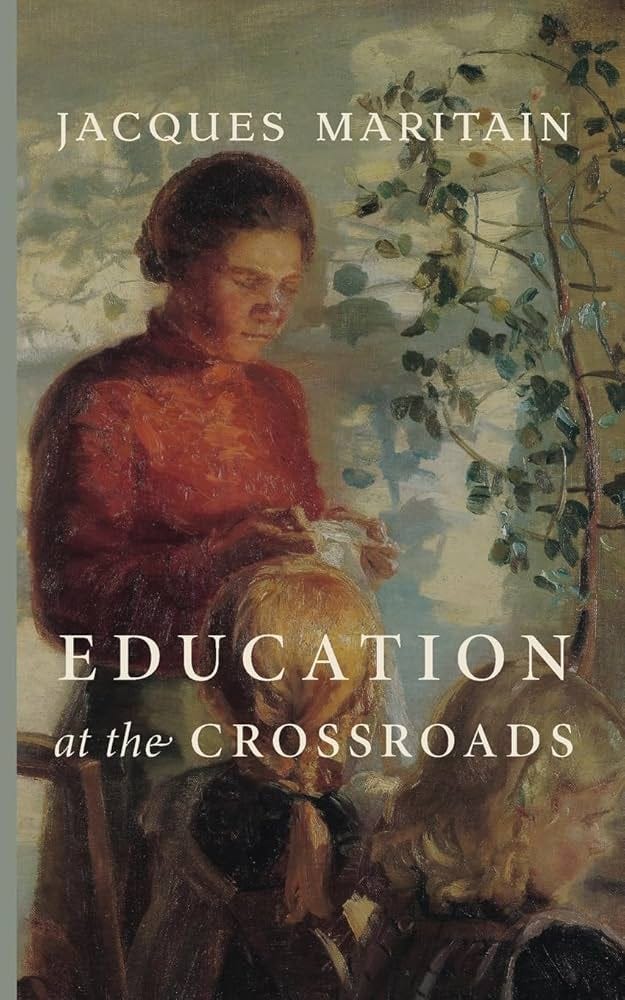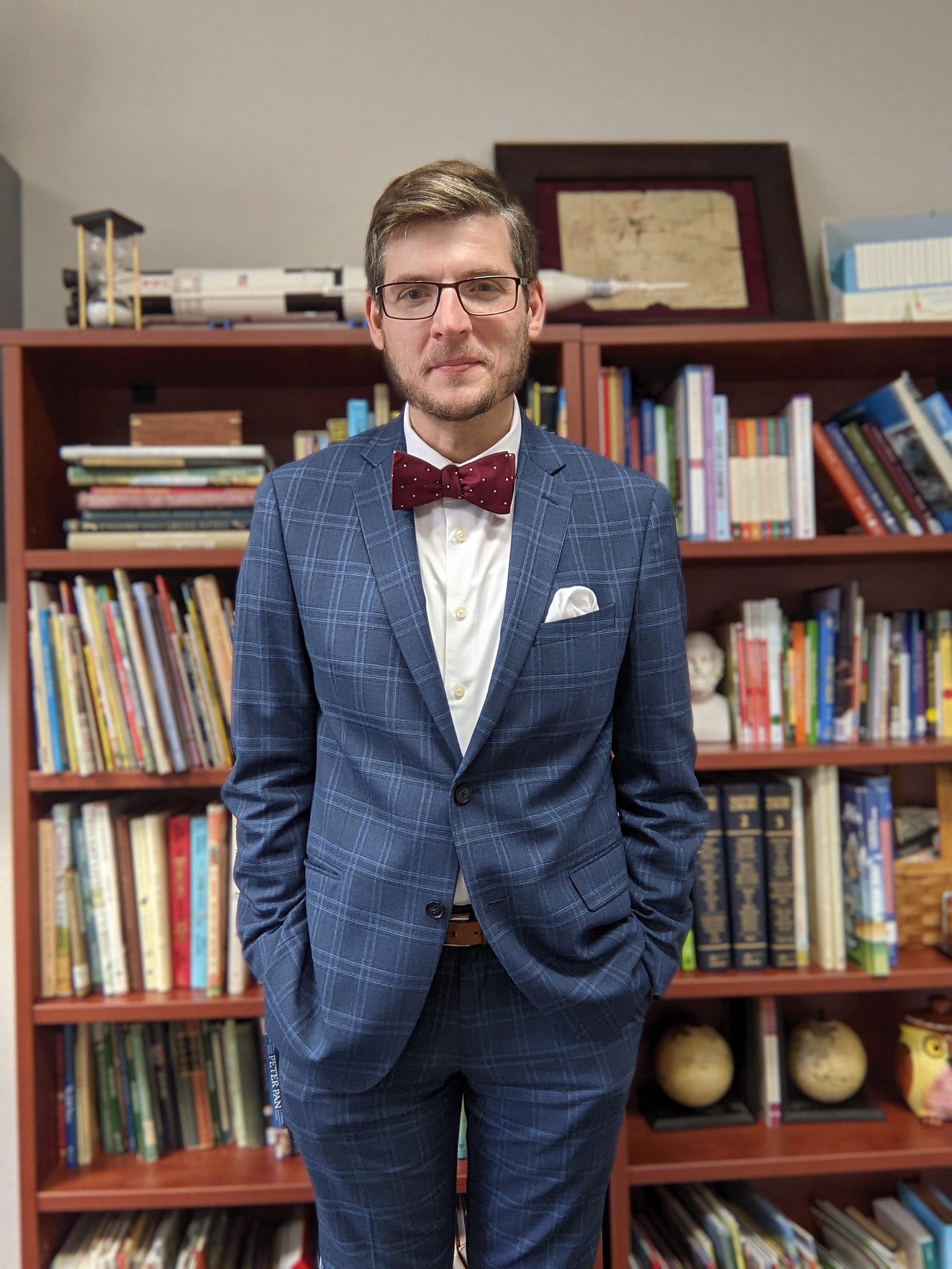As an Amazon Associate I earn from qualifying purchases
The great river of Western thought has its source in two great springs: Athens and Jerusalem, the Classical and the Hebraic, or, if I may borrow an image from Till We Have Faces, the “thin, clear water” of reason and the “thick, dark blood” of sacrifice.
The Medieval Synthesis—the coherent and, indeed, complementary union of these two traditions—effected by Boethius, Augustine, and above all Aquinas is the most profound development in the history of human culture. And its breakdown the most profound catastrophe.
We are the inheritors of a broken tradition. Everywhere we look there are seeming paradoxes—dichotomies between two opposing ideologies. Fideism and Rationalism, Romanticism and Empiricism, Materialism and Idealism: in every sphere of human thought, principles which were formerly woven into an infinitely-beautiful and infinitely-complex hierarchical tapestry of “both/and” unity have bifurcated into “either/or” extremes. We are born into a world of warring contradictions. It shouldn’t surprise us that the incidence of deep crises of identity in our young people continues to rise.
Alongside fellow 20th-century thinkers like Gabriel Marcel, Martin Buber, Viktor Frankl, Etienne Gilson, and Karol Wojtyła, the work of Jacques Maritain has proved influential in beginning to stitch up the tear in the fabric of Western Civilization (a tear chronicled by Maritain himself in his underappreciated Three Reformers). For Maritain this is a project not only of recapturing the tradition (he himself was largely responsible for reinvigorating serious Aristo-Thomism), but also of making genuine contributions, advancing perspectives gleaned from the often painful errors of more recent centuries, but developed always in continuity with the tradition of Western philosophic thought which Maritain called in his Introduction to Philosophy “universal”—the “philosophia perennis.”
From that Introduction to Philosophy in my first real philosophy course to Creative Intuition in Art and Poetry, I have yet to encounter a Maritain work which failed to prove transformative for my understanding of its subject matter. In each case, the transformation was accomplished through a deepening of my appreciation for the Greeks, St. Thomas, and modern thinkers alike.
Education at the Crossroads began life as a series of lectures given during the Second World War. It is perhaps not entirely coincidental that it shares that exact origin with another seminal text on education, Lewis’s Abolition of Man. As schooling gradually became more widespread, industrialization led to booming populations, and compulsory education laws were passed in the late-19th and early-20th centuries, the question of how to do schooling both well and at such a large scale has become an ever more critical one.
I was initially introduced to Education at the Crossroads in the form of excerpts assigned as readings for the Philosophy of Education course in the Classical Education graduate program at the University of Dallas. I confess that, as is too often the case with those of us fated to do a graduate degree while already fully engaged in family and professional life, I could not devote the attention to it at the time that I now know it deserves.
There is a sense in which the philosophy and science of education is quite a new field. The tradition is of course rife with works touching on education and whose conclusions certainly have ramifications for the education of young people, going all the way back to the Republic and the Meno. Socrates himself was put on trial for corrupting the youth after all. But while all of these—from Plato to Sayers—are essential reading, they are not rigorous works of educational philosophy per se. Where is the systematic, top-to-bottom treatment of education as a distinct sub-discipline of philosophic inquiry? Where is the Summa Pedagogica? The work of the Paideia Group perhaps approaches it, but I propose that Maritain’s Education at the Crossroads, while not that work itself, could provide a template.
It is a little book, but broad in scope. The depths of Maritain’s erudition and the wisdom contained within are immediately evident. It is equally evident, for myself at least, that my grasp of the philosophic tradition upon which Maritain is drawing is so very partial. And yet, it is this very comprehensiveness which is the work’s primary contribution.
Like a good Thomist, Maritain can’t help but begin by distinguishing three ways in which we use the word education. After that he defines the nature of humanity, explaining that if “the chief task of education is above all to shape man,” then one’s philosophy of education is necessarily dependent upon one’s anthropology. Defining man first and only then education, he delineates education’s specific aims before describing its modes of operating, making specific curricular and structural recommendations, and concluding with a discussion of particular questions facing the educators of the time.
Leaving aside the concluding chapter discussing contemporary problems, the basic structure is:
Definition of education (formal cause)
Ends of education (final cause)
Modes of operating (efficient cause)
Curriculum and instruction (material cause)
What is more, all throughout Maritain’s work, you will catch glimpses of other greats. This little book is like a Grand Tour of many of the most important ideas in liberal education. As you read, you will find yourself remembering your Adler here, Doug Lemov there, even Jim and Charles Fay. Just one example: In the third chapter, Maritain says, “The universe of a child is the universe of imagination—of an imagination which evolves little by little into reason. The knowledge which has to be given to the child is knowledge in a state of story, an imaginative grasp of the things and values of the world.” In two sentences Maritain has captured the basic principle on which both Vigen Guroian’s Tending the Heart of Virtue and James S. Taylor’s Poetic Knowledge rest.
The question of the ideal education—the truest, most essential nature of classical, liberal arts education—and how to realize it faithfully at a large scale is one of the great questions of our time. It’s a question to which we don’t yet have a demonstrably definitive answer, but one which a great many—including many reading this—are grappling with right now. If that’s you, this book is an indispensable read.
I don’t know if someone will ever write the Summa Pedagogica, but if they do, they would do well to include lots of footnotes pointing to Education at the Crossroads.
Thomas Beyer was educated at the College of Saint Thomas More, Texas Woman’s University, and the University of Dallas where he earned a Master's in Classical Education. He spent 8 years teaching and leading at Great Hearts Irving Lower School and is the Founder of Saint Winefride's Society, a fellowship of teachers and learners devoted to championing authentic classical, liberal arts education. Father to Evie the Artistic, Penelope the Sensible, and Ezra the Compassionate.




